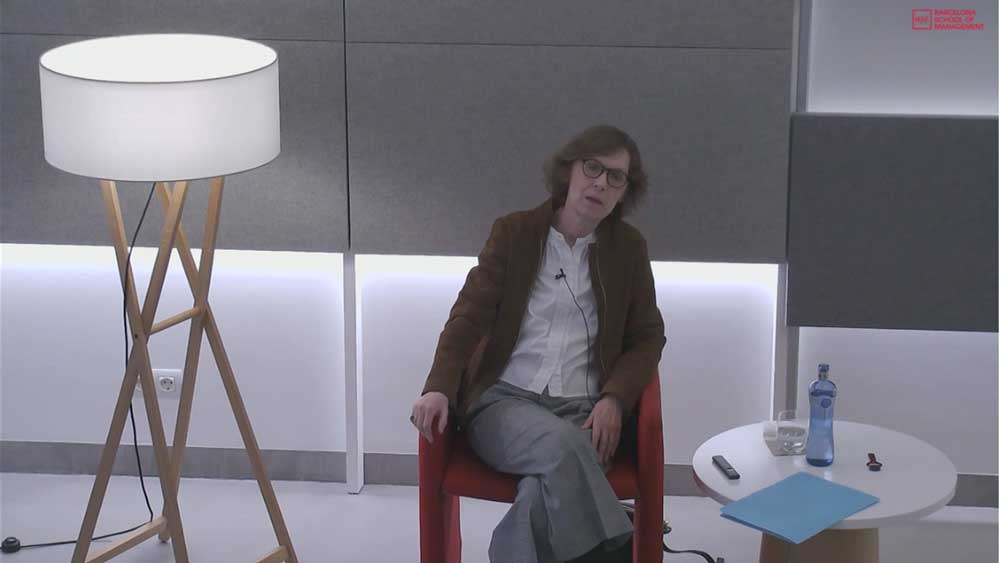Estela Ocampo, professor of Art Theory at the UPF, reviews the avant-garde movements of the early 20th century and explains how they transformed the artistic paradigm known to date: naturalism. Cubism, expressionism or futurism, among others, break with the schemes and influence current contemporary art.
The avant-garde is a break with the past, with more than four centuries of seeing the same art. "The different avant-garde movements, which pose many different questions, coincide in the need to establish a free artistic paradigm," said Estela Ocampo, PhD in Philosophy and Arts and professor of Art Theory at the Universitat Pompeu Fabra, during the webinar "The radical gesture: art and avant-garde of the 20th century".
Cubism, Expressionism, Futurism, Dadaism and Surrealism are some of the movements Ocampo has explored in order to explain the avant-garde movements of the first decades of the 20th century which, despite their differences, "wanted to break with the paradigm of naturalistic mimicry"."Antinaturalism, which expresses itself in many ways, seeks to completely replace the relationship of art with nature with a totally different one in which art is autonomous," the professor reasoned.
New forms and referencesFor four centuries, artists were subject to certain rules such as verisimilitude in representation or chiaroscuro, among others, and followed certain precepts, for example, regarding the human body. However, although the seventeenth-century academies "freed" artists from the influence of the guilds, the strict precepts soon "straitjacketed" the creators.
"The interest in primitive art is practically immediate," said Ocampo, who exemplified this trend with Pablo Picasso's Les Demoiselles d'Avignon. A painting that, however, produced a lot of rejection. Why? "Because of the use of African masks as a face," said the professor.
The appreciation for the primitive is not only registered in Picasso and Cubism, but also in other movements that coincide with the need to find a way out of naturalism.

"Futurism is perhaps one of the movements with the most radical approach," recalled Ocampo who, in turn, admitted that beyond its founding manifesto (1909) published in Le Figaro, "the basic approach was shared with the others movements". "Futurism, in any case, responds to a "certain pre-war environment in Europe" and to a "very critical" attitude of the artists. "It speaks of an aggressive movement as opposed to the immobility and reverie that characterized previous periods of European art," Ocampo claimed.
La máquina, la agresividad y la glorificación de la guerra eran algunos de los aspectos más ensalzados por el movimiento que, en sus inicios, tuvo una vertiente anarquista. The machine, aggressiveness and the glorification of war were some of the aspects most praised by the movement which, in its beginnings, had an anarchist side."The colored tubes, for us, were like sticks of dynamite," said Maurice Denis, one of the key figures of expressionism.
Political and pictorial revolutionBeyond the warmongering rhetoric, in the twenties of the 20th century another substantial avant-garde form for contemporary art was born : abstraction. Although it was not exclusively a product of the Russian avant-garde, it has one of its greatest exponents inKazimir Malevich. "It is the link between the political avant-garde and the pictorial avant-garde," said Ocampo, who considered it "a privileged case".
"Russia was extraordinarily creative in artistic terms, but also in economic, political and social terms," said the professor of Art Theory at the UPF. In this sense, Ocampo insisted on the first adhesion of artists like Wassily Kandinsky or Malevich to the Russian revolution. Something that, unfortunately, "did not end up being a good relationship".
While Kandinsky left the USSR in 1919, preceded by Marc Chagall, who did so in 1922, Malevich became a referent of the movement and took anti-naturalism to its extreme with the work White on White, after which he stopped painting.